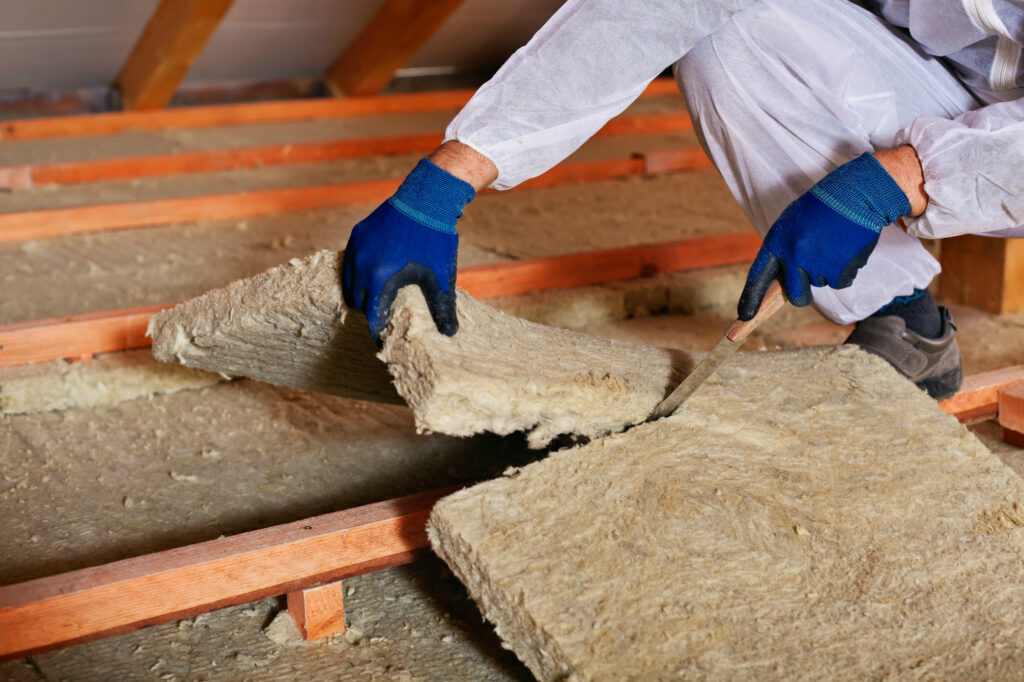Determining whether it’s time to remove old insulation is crucial for maintaining the comfort and efficiency of your home or business in Sturbridge, MA. Old insulation can deteriorate over time, losing its effectiveness and even causing potential health and safety issues. In this article, we’ll guide you through the signs that indicate it may be time to replace your insulation, as well as the factors to consider before making that decision.
Signs You Need to Remove Old Insulation
Decreased Energy Efficiency
One of the first signs that your insulation might need replacement is a noticeable increase in energy bills. When insulation loses its integrity, it no longer performs as effectively, allowing conditioned air to escape and outdoor air to infiltrate your home. This forces your HVAC system to work harder, leading to higher energy costs.
Visible Damage to Insulation
If you notice that your insulation appears wet, compressed, or has visible signs of mold or mildew, it may be time for removal. Damaged insulation can no longer provide the proper barrier against heat loss and moisture, which can lead to further complications like mold growth and structural issues.
Presence of Pests
Rodents, insects, and other pests can nest in your insulation, particularly if it’s been there for many years. If you discover signs of pest activity, such as droppings or chewed insulation, it’s a clear sign that the insulation needs to be removed and replaced. In addition to damage, pests can introduce health risks.
Old Insulation Materials
Older insulation materials, like fiberglass or cellulose, can degrade over time and lose their effectiveness. If your home or building still has outdated materials, it might be more cost-effective to replace them with modern insulation options that provide better performance and efficiency.
Changes in Home Comfort
If your home feels drafty or you notice temperature fluctuations in certain rooms, your insulation may no longer be up to par. Proper insulation is key to maintaining consistent indoor temperatures. If you’re experiencing discomfort despite using heating or cooling systems, it may be time to consider new insulation.
Things to Consider Before Making a Decision
Before deciding to remove old insulation, it’s essential to evaluate a few key factors:
Cost of Insulation Removal and Replacement
The cost of removal and replacement can vary significantly depending on the type of insulation, the size of the space, and the extent of the damage. You’ll need to weigh the cost of replacing old insulation against the potential savings on energy bills and the long-term benefits of improved comfort and efficiency.
Health and Safety
Old insulation that has been damaged by water, mold, or pests can pose health risks. Mold can cause respiratory issues, while pests may carry diseases. If the insulation in your home is compromised, it’s important to remove it to maintain a healthy environment.
Types of Insulation Available
There are various types of insulation materials to consider when replacing old insulation. Each type has its own benefits depending on your needs:
| Insulation Type | Benefits | Ideal Use Case |
| Fiberglass | Cost-effective, widely available, non-combustible | Attics, walls, and floors |
| Spray Foam | High R-value, excellent air sealant | Attics, crawl spaces, and hard-to-reach areas |
| Cellulose | Environmentally friendly, good at air sealing | Attics and walls |
| Mineral Wool | Fire-resistant, good moisture resistance | Basements, exterior walls |
Building Code and Environmental Considerations
When removing old insulation, it’s crucial to follow local building codes and environmental guidelines. In Sturbridge, MA, regulations may govern the types of insulation materials you can use and how to dispose of old insulation safely. Make sure to consult with professionals to ensure compliance.
Process of Removing and Replacing Old Insulation
Step 1: Inspection and Assessment
A thorough inspection is the first step in determining whether your insulation needs to be replaced. A professional contractor can help assess the condition of the insulation, look for signs of damage, and identify any potential risks, such as mold or pests.
Step 2: Removal of Old Insulation
If it’s determined that replacement is necessary, the old insulation will need to be carefully removed. This can be a labor-intensive process, especially if there is significant damage. Pests, mold, or water damage may require specialized equipment for safe removal.
Step 3: Insulation Installation
Once the old insulation is removed, the new insulation can be installed. Depending on the material you choose, this step will involve either placing batts or rolls of insulation or applying spray foam insulation. Professionals can ensure that the new insulation is installed according to industry standards, maximizing its effectiveness.
Step 4: Clean Up and Disposal
Proper disposal of old insulation is essential for both environmental and health reasons. Materials like fiberglass and cellulose need to be disposed of correctly. Your spray foam insulation contractor in Sturbridge, MA should handle this aspect of the process, ensuring that old insulation is safely removed from your home.
Comparison of Insulation Materials
| Insulation Material | R-Value (per inch) | Moisture Resistance | Noise Reduction | Cost (per square foot) |
| Fiberglass | 2.2–4.3 | Low | Moderate | $0.40–$0.75 |
| Spray Foam | 6.0–7.0 | High | Excellent | $1.00–$3.00 |
| Cellulose | 3.5–4.0 | Moderate | Good | $0.60–$1.00 |
| Mineral Wool | 3.0–4.0 | High | Good | $0.75–$1.20 |
Common Questions
How often should insulation be replaced?
There’s no set timeline for replacing insulation, but it’s generally recommended to check it every 10-15 years. If your insulation shows signs of damage, it should be replaced immediately.
Can I replace my insulation myself?
While DIY insulation replacement is possible for some materials, it’s often best to hire a professional. They can ensure proper removal, installation, and adherence to safety and building codes.
Will replacing old insulation improve my home’s value?
Yes, upgrading your insulation can improve your home’s energy efficiency, comfort, and overall marketability. Potential buyers will appreciate the improved energy performance.
What is the best type of insulation for an older home?
Spray foam insulation is often the best choice for older homes. Its ability to seal gaps and provide high insulation value is ideal for homes with existing issues like drafts or air leaks.
Bonus Tips for Insulation Maintenance
- Inspect regularly: Even after installing new insulation, it’s essential to check it periodically for damage or wear.
- Consider air sealing: Along with insulation, sealing gaps around windows, doors, and pipes can further improve energy efficiency.
- Ventilation: Ensure your attic or crawl space has proper ventilation to prevent moisture buildup, which can damage insulation.
Conclusion
Removing old insulation in Sturbridge, MA, is a significant decision that requires careful consideration of the condition of the existing insulation, potential health risks, and the benefits of upgrading to more efficient materials. By understanding the signs that it’s time for replacement and the process involved, you can make an informed choice that improves the comfort, energy efficiency, and safety of your home.
Frequently Asked Questions
1. How do I know if my insulation needs replacing?
Signs include high energy bills, drafts, moisture, or pest issues. Damaged insulation can lead to inefficiency and discomfort.
2. What are the benefits of replacing old insulation?
It improves energy efficiency, reduces costs, enhances comfort, and prevents moisture or pest damage.
3. Can I replace my insulation myself?
It’s recommended to hire a professional for safe, effective installation and compliance with building codes.
4. How long does insulation last?
Most insulation lasts 15-20 years but may need replacing sooner if compromised by moisture or pests.
5. What type of insulation is best for my home?
It depends on your home’s structure and needs. Spray foam, fiberglass, and cellulose are common options, with professionals helping to choose the best fit.
Ready to Achieve a More Comfortable Home?
If you’re noticing signs that your insulation needs replacing, contact Lamothe Insulation and Contracting today. Get expert advice and professional installation to improve your home’s energy efficiency and comfort.
Contact:
Lamothe Insulation and Contracting
Phone: (508) 847-0119
Email: [email protected]
Author: With over two decades of hands-on experience, Robert Lamothe, owner and lead installer of Lamothe Insulation, brings unparalleled expertise in spray foam insulation, carpentry, and building science. Since 2002, he has earned a reputation for precision, quality craftsmanship, and delivering energy-efficient solutions that stand the test of time. Lamothe Insulation is a family-owned and family-operated business, and Robert also owns the Goddard School of Auburn, an early childhood education school.
Reviewer: Ethan Taylor has 8 years of experience in spray foam insulation. He reviewed this content and suggested ways to simplify business outreach while keeping trust and professionalism intact.







